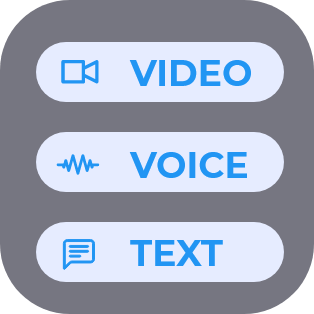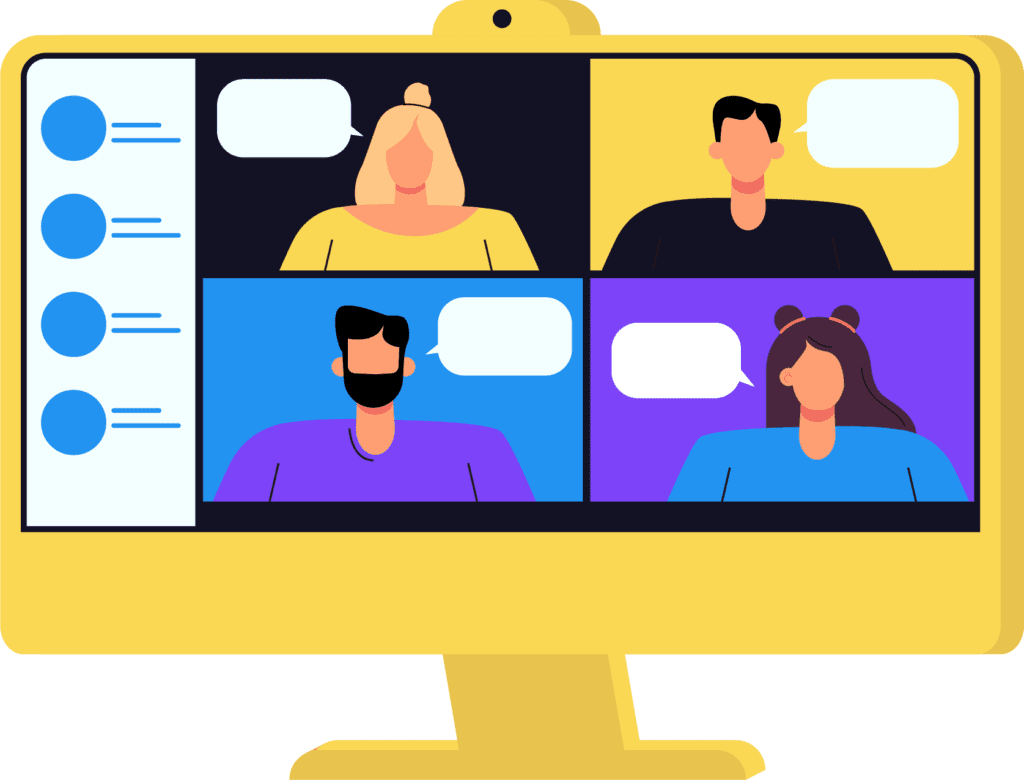MedTech, TeleHealth, HealthTech – a lot of big words are trying to capture the revolution that the healthcare industry is going through these days. The Coronavirus limited physical movement and accesibility, thus forced HMOs and companies to change and expand their digital presence. One of the ways is with healthcare chatbots – and during our healthcare meetup, I met Geertina Hamstra.
A dutch mom of 2 daughters and more than 100 chabots, Hamstra is a conversation designer for about 15 years. She had great stories, including fascinating ones about how healthcare chatbots can bond with humans, even beyond her expectations. Watch our conversation, in the 18th episode of Taking Turns.
• You have 15 years of experience in conversational AI. How did it all started?
Actually, by accident. My friend’s brother had a tech company and back in the day Windows Live Messenger or MSN was a really popular platform. They decided to develop some kind of bot for it. They designed it as a keyword-triggered bots. You could ask for traffic jams, you could ask for the weather or to tell a joke. They called the bot “Ask Alice”. And after two days the database collapsed because so many people were asking other stuff than the keyword triggers. They asked “who are you”, they started cussing at us because she couldn’t answer those kind of questions, the simple questions.
So the guys start – okay, we need someone to create these answers for us. From there on, my adventure started with hundreds of meters of Excel with all the questions asked where there were no answers to. So I started with categorizing all the questions. What do people ask, why do people curse, do people ask follow-up questions, etc. There is where I started with world of Alice, and we ended up translating Alice in 5 different languages. So Alice went worldwide and she had at the highest point, 5 million unique users all over the world.
Do you want a chatbot connected to a phone in your business? Here’s how to do it.
• What is the project or bot you’re most proud of?
The one I’m most proud of is the one which cost me the most energy: That was the Sweetie 2.0 chatbot. There was a virtual 10-year-old Filipina girl who was used to detect webcam child sex tourism. So this was a virtual girl who went online to identify offenders in chat rooms. The project is still ongoing. I had the privilege to lay the baseline for it and it’s still ongoing and catching potential sex offenders online.
💬 Previously on Taking Turns – Check out the whole playlist 💬
Dexter Zavalza: Former educators can contribute to conversational AI
Transition Game: Zara Jillings pivoted from hoops to digital persons
Maciej Maliszewski: “Chatbots can be the most important business channel”
How the Roo Chatbot is creating and reflecting a societal change
• let’s talk about HEALTHCARE chatbots. Why are They become more popular these days?
Healthcare is becoming increasingly expensive, and in general people would like to have more and more personal contact with their general practitioner or about their problem. Since we are more educated, we tend to ask more questions. So healthcare chatbots can help with educating people or even starting conversation about problems they have. For instance, for general practitioner, but also in mental health. Furthermore, studies shows also that people are more comfortable telling personal things to a chatbot than, for instance, a real person.
Always have a good fallback option. Either as a live chat or by asking for contact details, a question should always have an answer.
GEERTINA HAMSTRA
• You built more than 100 chatbots – WHAT IS THE MOST IMPORTANT THING FOR A CHATBOT OR A VOICE ASSISTANT?
Actually, there are two things. The first – and there’s a lot of debate on that – is that every chatbot needs to have a personality or character. For multiple reasons. For instance, let’s say you’re writing with more than one conversation designer on a chatbot. It is really important to have an extensive character written for this bot, because you and I are two different persons. Therefore, if you and I have to write for a chatbot, we need to do it in a similar way. Hence, we have to align tone of voice, etc. So when you make a good bot persona, multiple people can write the right way for a chatbot.
The other thing: always have a good fallback option. For a larger company, that means live chat maybe. For smaller companies, the bot can ask – ‘do you want to leave your email or phone number, so we can contact you afterwards?’. Generally, a question should always have an answer.
CoCo & Co Content reCommendations
- 5 reasons why chatbots are the future of e-commerce
- How AI is making an impact on incumbent industries?
- When sound design makes all the difference
- Check out our conversational AI glossary
• Tell us about the funniest, most surprising thing that happened to you as a conversation designer.
Well as a conversation designer, I tend to test a lot of chatbots, of course. One day I was testing one of my old… Well, I call them babies. Because when you’re working 6 years on the chatbot it becomes like your children, or part of your family. So one day I was testing a chatbot which went over to a new platform and to another provider. It was a pension fund, in general a real boring subject. So I was asking around and also ask the question – what if my partner died, what happens with my pension.
I was directly forwarded to a person, who came to me and said ‘I’m sorry your partner died’. And I felt really embarrassed – I was testing the thing, so I immediately started apologizing. I said ‘sorry, I’m just testing, this was one of my babies you’re taking over’. I was just curious on how the chatbot was doing.
And I went quiet for a while in the other side, and then an answer came from a person who is also there. He said ‘Edwin asks if you are hitting up’. Apparently the colleague I work closely together with from the company was also in the room. And they asked around, so that ended up in a real fun conversation. That one was nice.
I call my chatbots ‘my babies’. When you’re working for 6 years on a chatbot, it becomes like your children, or part of your family
– GEERTINA HAMSTRA
• There was also a great story about Bibi, one of your healthcare chatbots.
Among our healthcare chatbots, we created on for a general practitioner. It could answer all kinds of questions about general health, so I have a headache then Bibi would ask, say, ‘okay, I’m sorry you have a headache, but for how long did you have the headache’, and then she could say ‘ok, now it’s time to call your general practitioner to make an appointment’, or she could say ‘OK, this is a real severe case, you should go to the hospital’.
Since we put a lot of empathy in that chatbot on the right point, people apparently bonded with her. Therefore, the doctor had more and more experiences with patients coming to the counter and say to the assistant there, ‘can I talk to Bibi? she already knows what I have’. So that was really a great compliment.
• For people who want to become a conversation design – and not by accident… – what other tips or advice do you have?
First of all, don’t be only conversation-minded, but also be a little bit fond of the technique behind it. There are a lot of technique involved in conversation design. I’m working with various different chatbot platforms, so you have to be curious about that too.
The best way is to start testing a lot of chatbots, and seeing where they go wrong or where you feel that a conversation can be improved, for instance. You could also look online for conversation design courses – there are many. And you could also go online and get in touch with conversation designers and ask them about their profession. If you interact with someone who’s passionate about their work, you can also see if it’s something you would like to do.
• Tell us more about Entopic, the company you’re working for.
We’re a content agency with content professionals, and we provide content-related services to a variety of businesses. We write copy, manage your cms or manage a complete project for you, such as a content migration, advice and strategy. We also have a recruitment department so we can provide our clients with the right professional. In the past few years, I trained a lot of colleagues also in the craft of conversation design, which comes really handy with UX writing and the upcoming voice technology, which is also very important for websites nowadays.
Next week, we’ll have episode 7 of Coming To Terms with AI! In the meanwhile – subscribe to our YouTube channel | Join our Discord community | Sign up for our newsletter | Follow us on Facebook, LinkedIn, Instagram or Twitter











